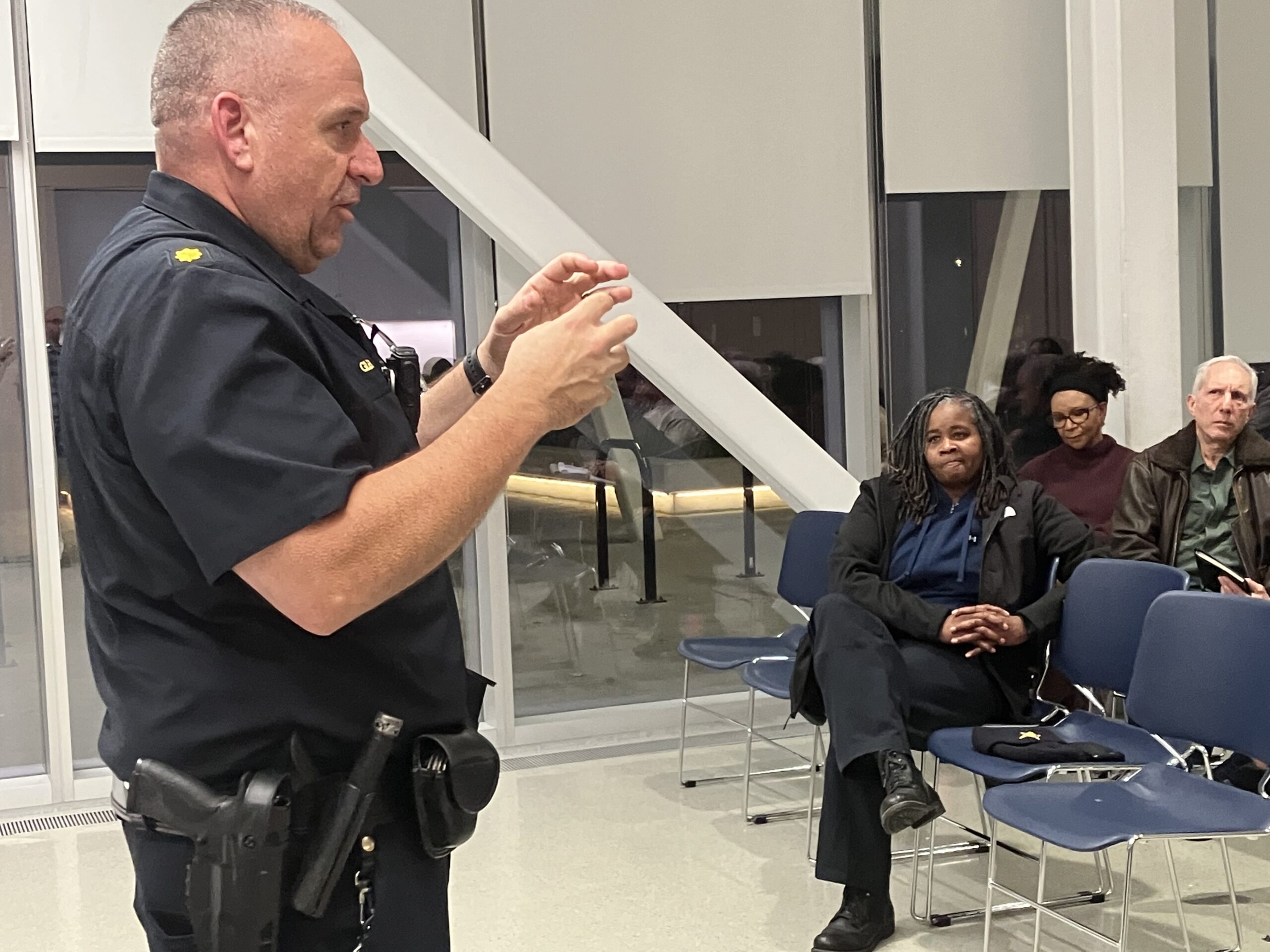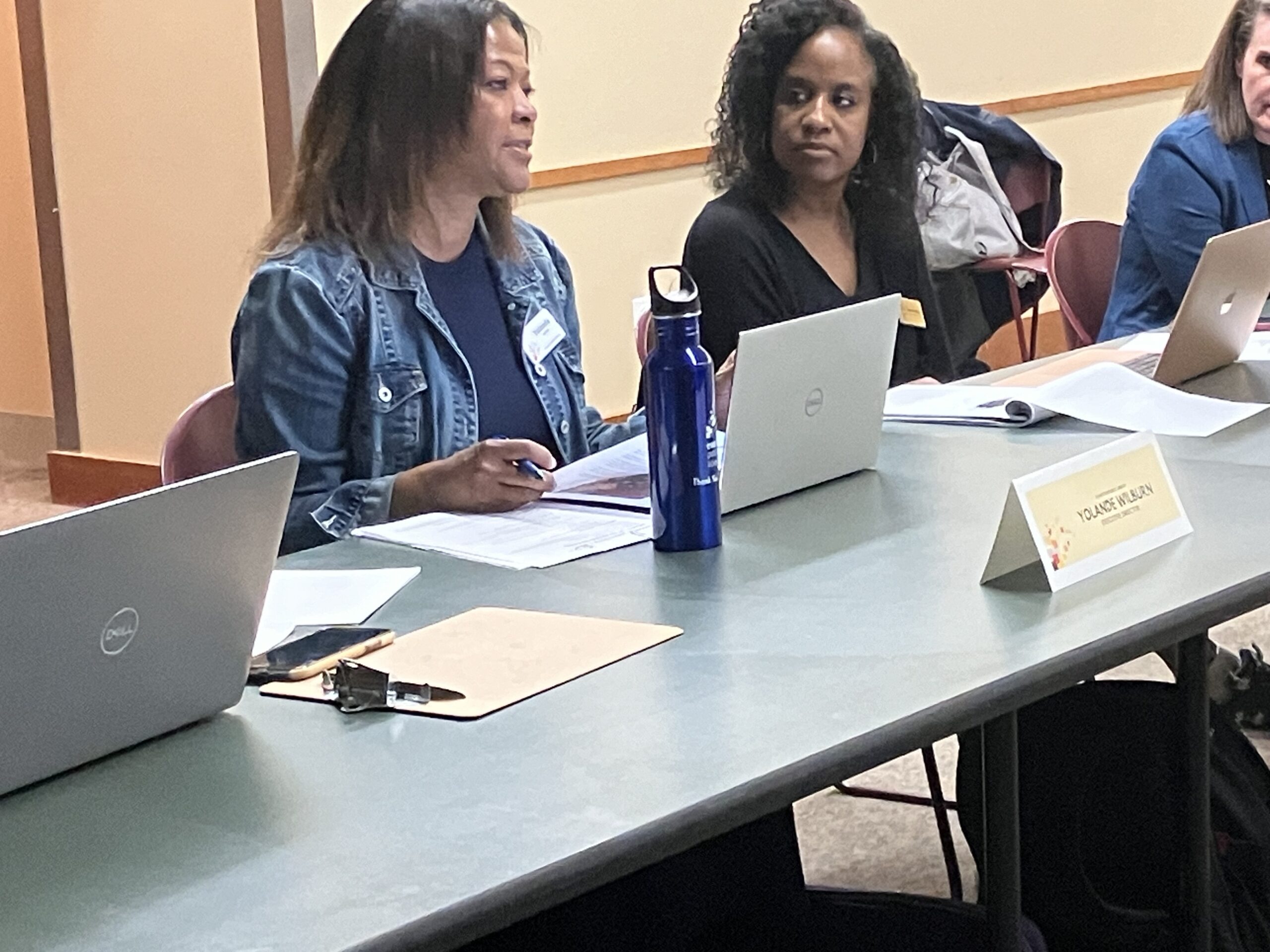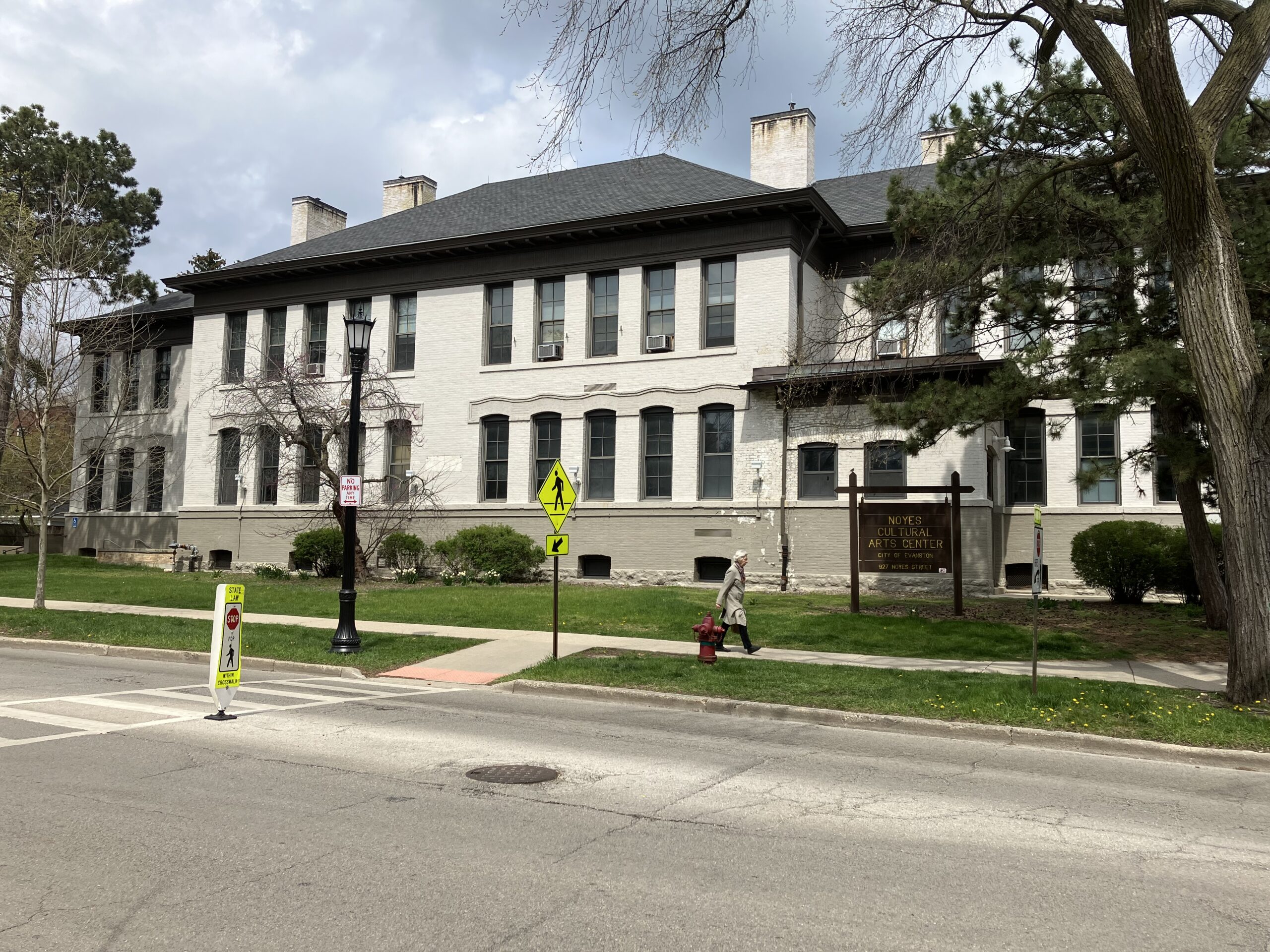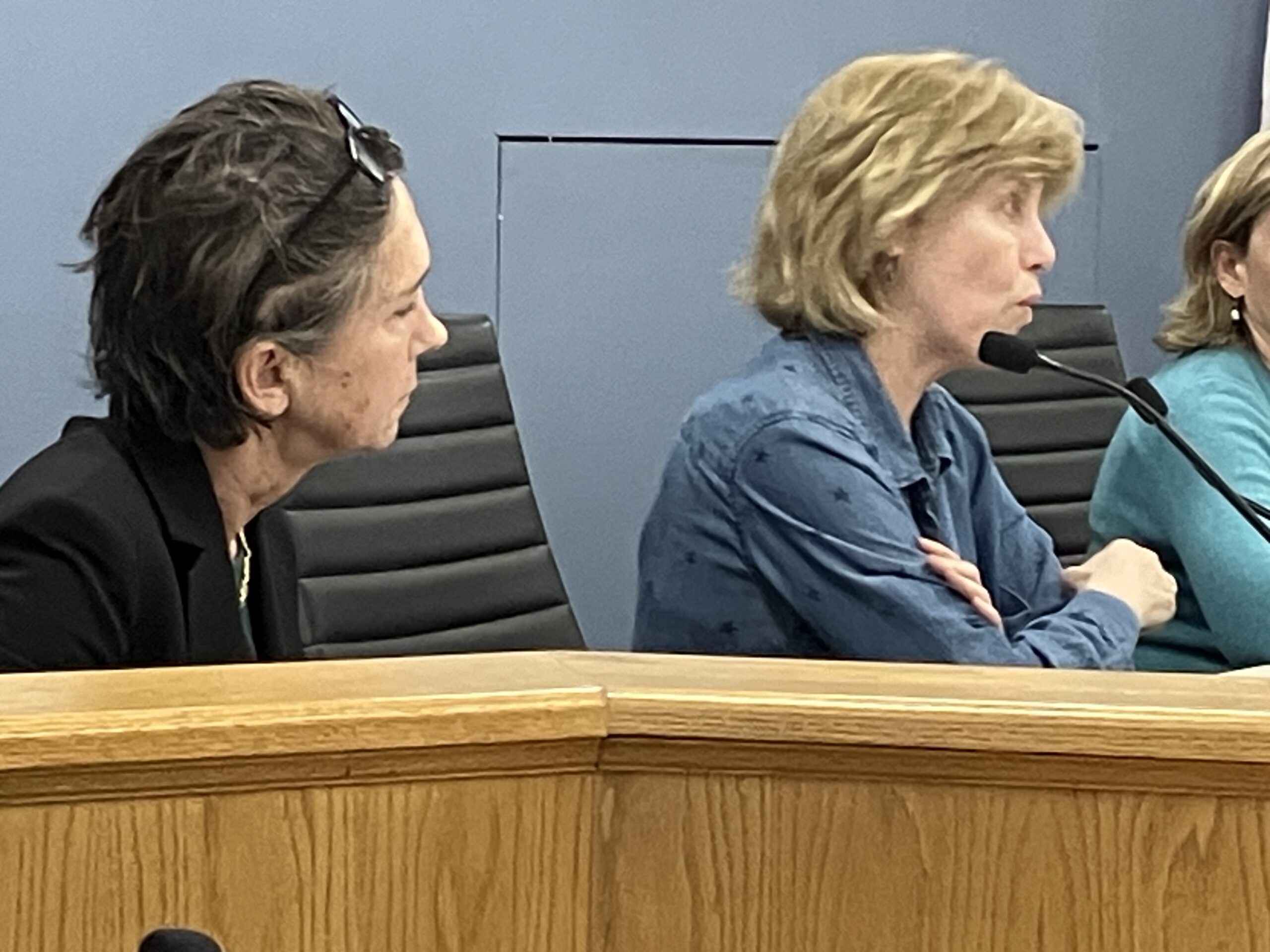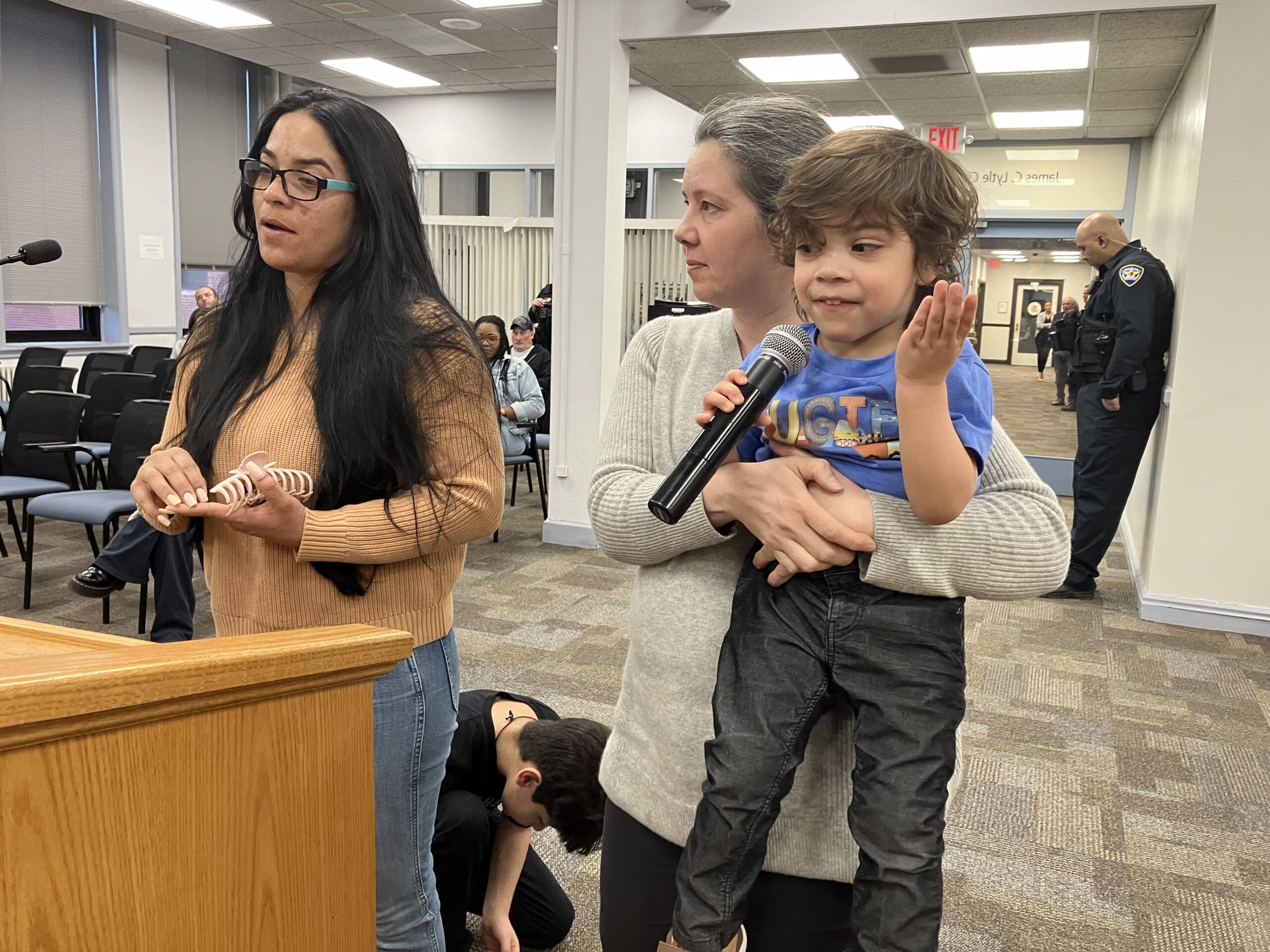By Bob Seidenberg
When Evanston police are called to respond to a protest held without warning, as was the case outside U.S. Rep. Jan Schakowsky’s house last Tuesday, what demand that place on police services?
In fact, it’s considerable, said Evanston Police Cmdr. Ryan Glew, describing police response to the protest that shut down Ridge Ave. in the late afternoon of Nov. 7 as about 100 protesters called on Schakowsky to sign a Congressional resolution supporting a cease fire in the Israel-Hamas conflict.
Glew spoke about the police response during the public safety portion of the combined ward meeting at Robert Crown that included residents from the city’s 3rd, 4th, and 9th wards.
Police have made gains in staffing, but the department still has as many as 16 vacancies, creating deployment challenges, officials have said.
Glew told residents, “Our staffing, a lot of it is public-facing. It’s what you see. But it’s also the stuff you don’t see. It’s the support stuff. And it’s also the amount of activity in this town that other towns don’t have to deal with.”
‘There’s a protest at Greenleaf and Ridge’
He offered the protest, from which he had just returned, as an example.
Police are “constantly running with 10 people,” he explained, referring to the minimum number of officers on one of the department’s 12-hour shift.
One officer, though, might “be down with a domestic, another taking a report,” he said, “and then all of a sudden, out of the blue, you get that call, and I hear it: ‘There’s a protest at Greenleaf and Ridge,’” he said about the call received initially through 911.
“And what’s the first thing that comes to my mind?” he said. . “That’s Jan Schakowsky’s house.”
“And then we go out there, and we’re dealing with professional protesters,” he said. “They’re telling us right away, ‘Our objective is to get an audience with Representative Schakowsky, or we’re going to get arrested.’”
“Dealing with that took a double digit amount of cops three hours to deal with,” Glew told residents at the meeting, going into greater detail.
“Cops from out of town — every supervisor we had is calling cops from the midnight shift to come in early. We’re holding cops from the day shift — we were supposed to have a shift change start at 6 p.m. — and then our supervisors were calling in the officers that were scheduled to work at midnight — we were making contact with them to see if they could come in early.”
Further, he said, all available traffic units responded to the scene, where the estimated 100 protesters had effectively shut down cars from traveling on Ridge Avenue.
“We had to ask our investigative unit to basically put on hold investigating their cases and come out to the street to handle emergency calls,” he said.
NIPAS called to the scene too
That wasn’t all, he said. Five patrol officers from other jurisdictions responded to assist with traffic control. Meanwhile, Northwestern University’s police department helped out, covering the geographic area within their jurisdiction, he said.
He said the last piece of the response was requesting a NIPAS (Northern Illinois Police Alarm System) Mobile Field Force team of about 40 officers come to the community, “mobilizing them to disperse the protest when we made the determination that it was safe to do so.”
In contrast to two other protests held earlier in the week, this one was completely unannounced, he said. Protesters arrived on the scene wearing yellow traffic vests and some even brought a plastic construction fence to shut down traffic along Ridge, one of the city’s busiest streets.
“Now the result was great,” he told the residents at Robert Crown, who broke out in applause after Glew finished. “And it came to resolution with no arrest and one minor skirmish.”
“But that took three hours, three-and-a- half hours of manpower or woman power time,” he told residents.
At its height, “we had 50 to 60 cops there,” he said.
